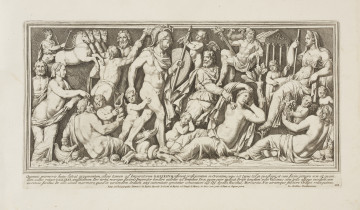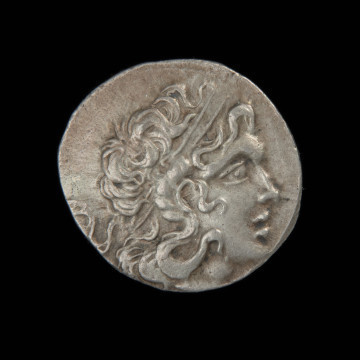
Statherian period
330 p.n.e. — 300 p.n.e.
National Museum in Szczecin
Part of the collection: Antique coins
Minting on the island of Rhodes began in the last quarter of the 6th century BC. Its actual development came later when three Rhodian poleis (city-states) founded the city of Rhodes (408/407) dedicated to Helios, whom the inhabitants considered their ancestor because of his association with the nymph Rhodes. The island's excellent location on the trade route leading towards the western coast of Asia Minor and Egypt encouraged the wealth of its inhabitants. Although Rhodes' power grew from trade in grain, oil, and wine, the rose became the symbol of the island. Present on coins, it carried a double meaning, as the name of the island and an essential product (rose oil) of the region. At the beginning of the 4th century, BC silver coins of Rhodes appeared bearing the head of Helios, the divine protector and a rose, a symbol referring to the name of the city. Initially minted in the Chios system of weights, Rhodes money became so popular that it was soon called Rhodian. The main side of the presented didrachma referred to Helios perceived as the personification of the Sun, the source of all life and regeneration. The cult of Helios on Rhodes and wealth of the islanders were reflected in a massive monument erected at the entrance to the harbour, the so-called 'Colossus of Rhodes', ranked among the seven wonders of the ancient world. The reverse of the didrachma shows a rose flower with a bud, a symbol of indestructibility, mystery and victory, above which the name of the city POΔION (Rhodion - Rhodes) is placed. The presented specimen is a beautiful example of Hellenistic art, characterised by deep relief, ornamentation and plasticity of both representations.
Genowefa Horoszko
Author / creator
Dimensions
cały obiekt: height: 4,4 mm
Object type
coin
Technique
minting
Material
silver
Creation time / dating
Creation / finding place
Owner
National Museum in Szczecin
Identification number
Location / status

330 p.n.e. — 300 p.n.e.
National Museum in Szczecin

1797
National Museum in Szczecin

287 p.n.e. — 281 p.n.e.
National Museum in Szczecin
DISCOVER this TOPIC
National Museum in Szczecin
DISCOVER this PATH
Educational path